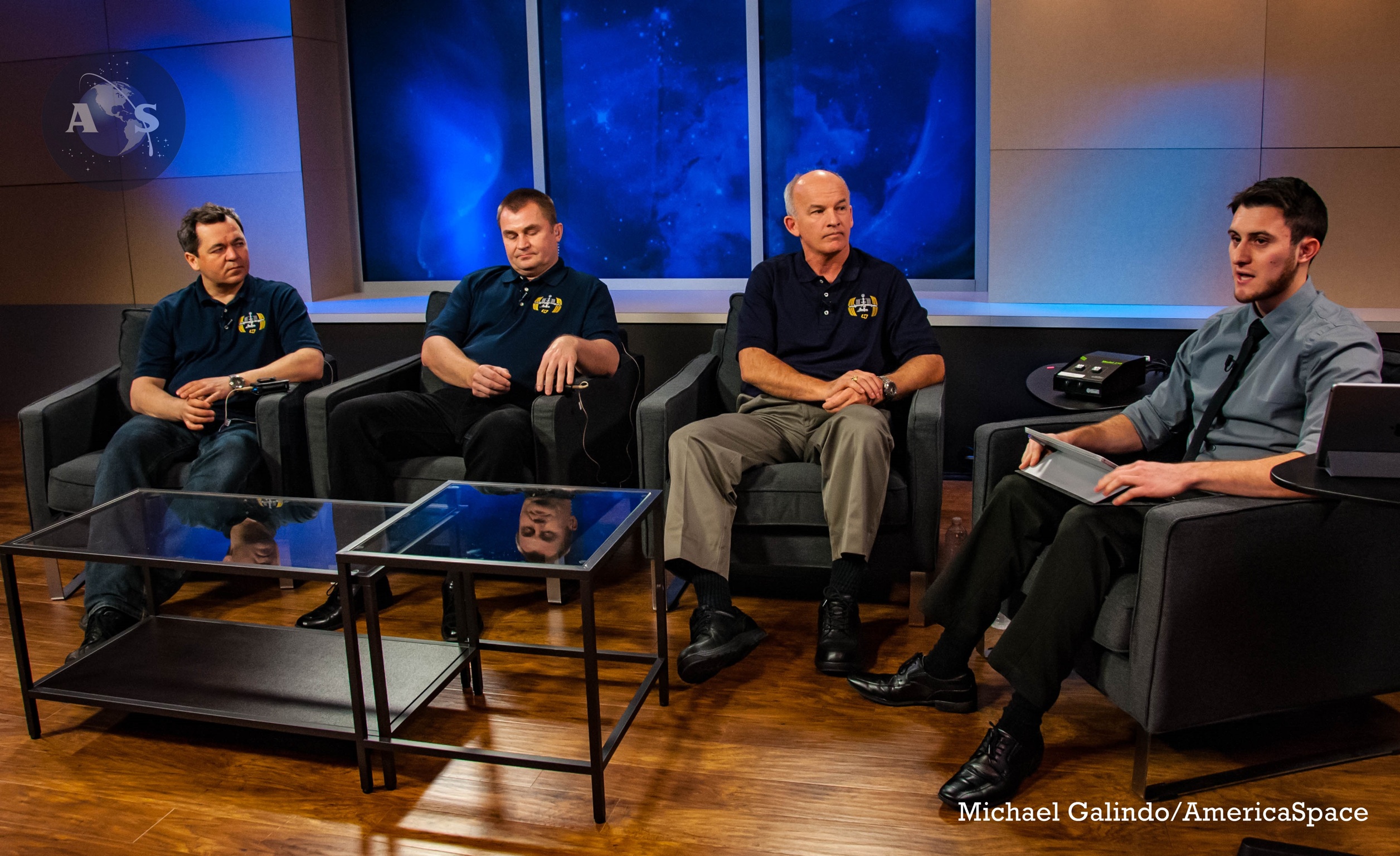
Three new crew members gathered before members of the public and media at NASA’s Johnson Space Center (JSC) in Houston, Texas, earlier today (Wednesday, 7 January) to discuss their forthcoming mission to the International Space Station (ISS). Current planning calls for U.S. astronaut Jeff Williams and Russian cosmonauts Alexei Ovchinin and Oleg Skripochka to launch from the Baikonur Cosmodrome in Kazakhstan aboard Soyuz TMA-20M—the final voyage of the older-specification Soyuz—on 19 March. Following a now-standard six-hour, four-orbit “fast rendezvous” profile, they will dock at the station’s space-facing (or “zenith”) Poisk module and join the incumbent Expedition 47 crew of Commander Tim Kopra of NASA, Russia’s Yuri Malenchenko, and Britain’s Tim Peake. Upon the return of the Expedition 47 crew to Earth in early June, Williams will rotate into the command of Expedition 48 and will helm the orbiting outpost through early September.
Aged 58, Williams will pip fellow astronaut Don Pettit as the oldest American ever to participate in a space station expedition, as well as becoming the first of his countrymen to fly as many as three long-duration orbital missions. Moreover, by the time Williams returns to Earth alongside Ovchinin and Skripochka aboard Soyuz TMA-20M on 7 September, he will have added about 173 days to his existing space-time tally of 362 days, producing a career total of 535 days across four missions.
This will establish him about 15 days ahead of the current U.S. cumulative spaceflight endurance record-holder Scott Kelly, who is currently targeted to return to Earth aboard Soyuz TMA-18M on 2 March, wrapping up the first (almost) one-year mission of the 21st century and totaling about 520 days across his own four-flight career. AmericaSpace’s Michael Galindo asked Williams if the shift toward flying NASA astronauts for longer cumulative periods represents a policy change, with regard to earlier medical concerns about cumulative radiation exposure. “No, it doesn’t represent a change,” Williams replied, pointing out that the agency had applied standards for cumulative radiation exposure and that these were looked at specifically prior to Scott Kelly’s one-year mission. Williams served as Kelly’s backup for this flight and the standards were examined with regard to both astronauts and determined that neither would exceed their lifetime radiation limits.
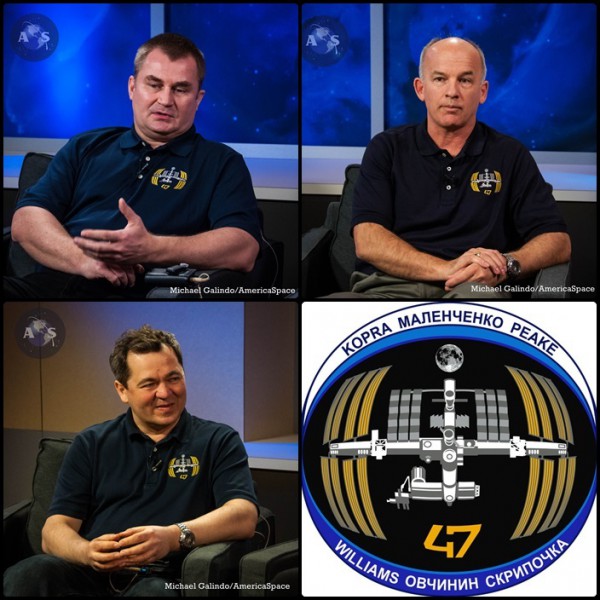
Selected as an astronaut by NASA way back in the spring of 1996, Williams flew aboard the third shuttle mission to assemble and supply the ISS, before moving into dedicated expedition training, just prior to the loss of Columbia. He went on to fly with Russian cosmonaut Pavel Vinogradov and, later, with Germany’s Thomas Reiter, as a member of Expedition 13 in March-September 2006, during which construction of the sprawling orbital outpost resumed. More recently, Williams launched to the station in September 2009 as a member of Expedition 21 and later rotated into the command of Expedition 22 until his return to Earth in March 2010. By the end of his third mission, he was less than one hour shy of 362 cumulative days in orbit and had performed three EVAs, totaling more than 19 hours.
Joining Williams aboard Soyuz TMA-20M, the 46-year-old civilian engineer Skripochka will be embarking on his second space voyage, having previously flown as a member of Expedition 25/26 from October 2010 through March 2011, at the end of which he accrued 159 days aloft and completed a trio of EVAs, lasting more than 16.5 hours. Interestingly, Skripochka’s first and second missions will take place on the first and last flights of the Soyuz TMA-M spacecraft, which has provided numerous astronauts and cosmonauts from Russia, the United States, Italy, Japan, the Netherlands, Canada, Germany, and the United Kingdom with their means of access to the space station over almost six years.
As already reported by AmericaSpace, the flight of Williams, Ovchinin, and Skripochka was originally planned to be the inaugural voyage of the new “Soyuz-MS” spacecraft—which benefits from higher-efficiency solar arrays, better propulsion-system redundancy, the new Kurs-NA (“Course”) rendezvous hardware, a lighter flight computer, and improved telemetry, control, and autonomous navigation capabilities—but it was recognized that Soyuz-MS would not be ready in time and the crew’s vehicle has since been switched with that of the Expedition 49 crew, scheduled for launch in June 2016.
During the course of today’s news conference, AmericaSpace’s Michael Galindo enquired as to the reason for the Soyuz-MS delay. Skripochka explained that the primary reason was associated with “paperwork,” as well as the flight certification protocols between the spacecraft and its Soyuz-FG launch vehicle, whilst Williams added that last year’s third-stage malfunction during the Progress M-27M flight—which utilized a similar booster—also played into the situation. In response to other media questions, Skripochka and Ovchinin outlined the features of the respective Soyuz TMA-M and Soyuz-MS designs: a more powerful computer, “which completely changes the crew actions,” in the former case, and enhanced satellite navigation system, proximity operations capability, and improved thrusters in the latter. Ovchinin stressed that the first flight of Soyuz-MS is now scheduled for midsummer, with 21 June understood to be the current planning date.
Despite being the sole non-Russian member of the crew, Williams actually has more flight experience aboard the Soyuz than either of his colleagues, with two previous missions. At one stage, he humorously described the arrangement—with all three men positioned shoulder-to-shoulder in the bell-shaped descent module for launch—as “triplets in a womb.” They have been training for the mission for more than two years, with the official NASA announcement appearing in February 2014.
Throughout much of the ISS era, it has become standard for a given crew to backup another crew, skip a mission, and then serve as the prime crew for the third. However, this received added complexity in the case of Williams, Ovchinin, and Skripocka, because they were tasked to backup Soyuz TMA-16M. Since this included one-year crewmen Scott Kelly and Mikhail Kornienko, with fellow crewman Gennadi Padalka scheduled to return to Earth after six months, a slightly different crew complement was arranged. In their role as backups for the one-year mission, Williams and fellow veteran Russian cosmonaut Sergei Volkov were assigned to backup Kelly and Kornienko, with Ovchinin assuming the backup role for Padalka. In the meantime, Skripochka served on the backup crew for the Soyuz TMA-18M short-duration visiting mission in September 2015, before all three men rejoined to begin formal Expedition 47/48 training.
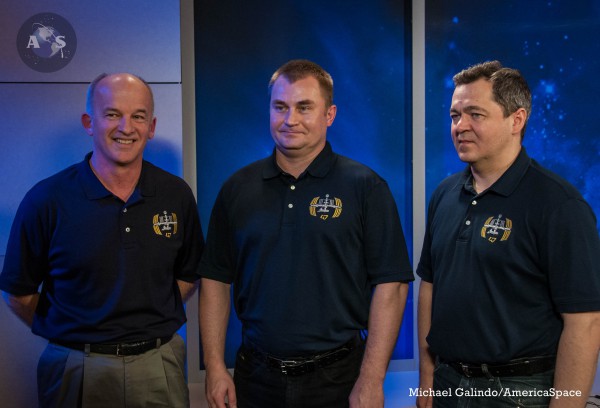
In his opening remarks at today’s conference, Williams noted that only the “last couple of months” had been focused on mission-specific tasks, with “generic” training have occupied the crew previously. He explained that he had been in Japan in December, whilst Ovchinin and Skripochka had been in Germany, but that the Russians would depart for the Star City cosmonauts’ training center, on the forested outskirts of Moscow, in the coming days and he would join them by the end of January. Looking ahead, the three men and their backups—NASA astronaut Shane Kimbrough and Russian cosmonauts Sergei Ryzhikov and Andrei Borisenko—are expected to arrive at Baikonur, on the desolate steppe of Kazakhstan, in late February or early March to begin their final preparations for launch.
As for Ovchinin, the 44-year-old retired Russian Air Force lieutenant-colonel expressed the hope that he would fulfil everyone’s expectations on his first space mission. He told the audience that he had been “getting ready for nine years” and was “hoping it will be my first, but not last flight,” adding in conclusion that “the crew is completely ready.”
And that readiness calls for a busy six months in orbit. By the time Williams, Ovchinin, and Skripochka arrive on-station, late on 19 March, to be greeted by the Expedition 47 crew, it is possible that SpaceX’s Commercial Resupply Services (CRS)-8 Dragon cargo ship will have already departed, having dropped off the Bigelow Expandable Activity Module (BEAM) in February. As previously reported by AmericaSpace, the extraction of BEAM from Dragon’s trunk and robotic installation at the aft-facing port of the Tranquility port is planned a few days later, but the actual expansion of the module and its ingress by the crew is anticipated to occur within four months. Williams told the audience that he was “very excited” about the BEAM arrived and explained that it would remain berthed to Tranquility aft “for a time,” although he would not be drawn on how soon after its arrival it would be inflated and accessed. He stressed that it would be expanded to its full volume using internal air tanks, after which the atmosphere would be equalized and the crew would enter the module to install data-collection equipment. The hatches between BEAM and Tranquility aft would remain closed for much of the module’s time on-orbit.
With as many as three SpaceX Dragons—CRS-9 through CRS-11—as well as a single Orbital ATK Cygnus and a pair of upgraded Russian Progress-MS resupply freighters anticipated during the residency of Williams, Ovchinin, and Skripochka, the traffic of visiting vehicles promises to be a heavy one. Of specific note, CRS-9 is currently planned to launch on 21 March, carrying the long-awaited International Docking Adapter (IDA)-2 to replace its near-twin, IDA-1, which was destroyed in SpaceX’s CRS-7 launch accident, last 28 June. IDA-2 will be installed, in a joint EVA/robotics operation, onto Pressurized Mating Adapter (PMA)-2 at the forward port of the Harmony node. Assuming an on-time launch, the EVA should occur in early April and, although Williams pointed out that the “primary task in the plan is fluid,” he did acknowledge that the integration of IDA-2 was the “major event on our plate” in terms of readying the space station for Commercial Crew operations.
Expanding upon the relevance of Commercial Crew, he said that the arrival of Boeing’s CST-100 Starliner and SpaceX’s Crew Dragon—both of which are targeted to complete their 30-day unpiloted test flights to the ISS, followed by 14-day crewed missions, by mid-2017—would “significantly expand the capability” for access to low-Earth and the station itself. He was evidently aware that there is “some truth” in U.S. concerns of an over-reliance upon Russia for assured crew access, but cautioned that Russia had been a great partner “to step up to the plate” as NASA toiled to develop a new spacecraft. Interestingly, Williams noted that the arrival of the Commercial Crew capability would not divide the usage of U.S. and Russian vehicles, that they would be cross-utilized, and that one U.S. astronaut could still be expected to appear on each Soyuz roster and one Russian cosmonaut on each Commercial Crew roster. He pointed out that the need for systems expertise on-station at all times called for members of both nations’ spaceflying corps to be aboard both vehicles.
Be sure to “Like” AmericaSpace on Facebook and follow us on Twitter: @AmericaSpace
Missions » ISS » Soyuz TMA-M » TMA-20M »



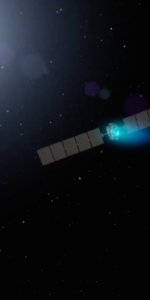
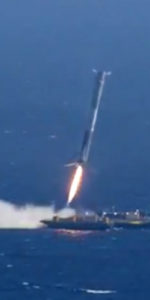
5 Comments
5 Pings & Trackbacks
Pingback:Three Spacefarers From Three Nations Discuss Four-Month Mission to Space Station « AmericaSpace
Pingback:Last Soyuz TMA-M Crew Ready for Friday Launch to Space Station « AmericaSpace
Pingback:America’s Next Record-Breaker Rockets to Orbit for Six-Month Mission « AmericaSpace
Pingback:Jeff Williams and ‘Sardines’ Top the U.S. Spaceflight Experience Table « AmericaSpace
Pingback:Expedition 47 Return Extended to 18 June to Support ‘Heavy Scientific Research Work’ « AmericaSpace